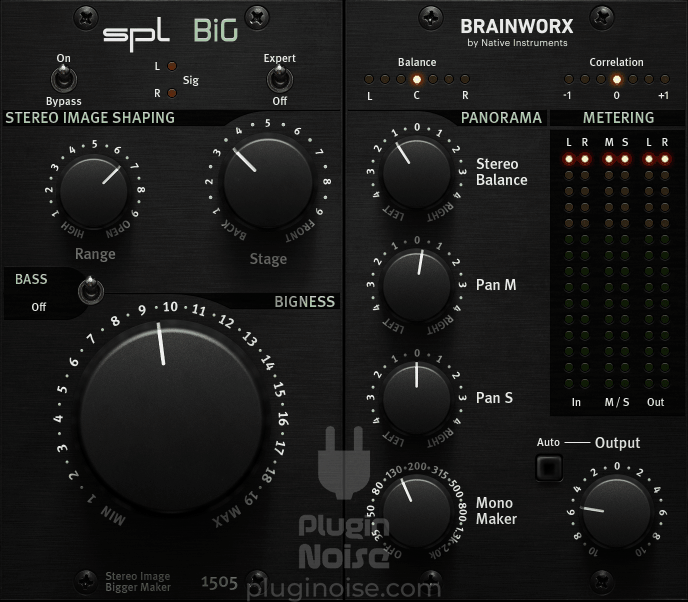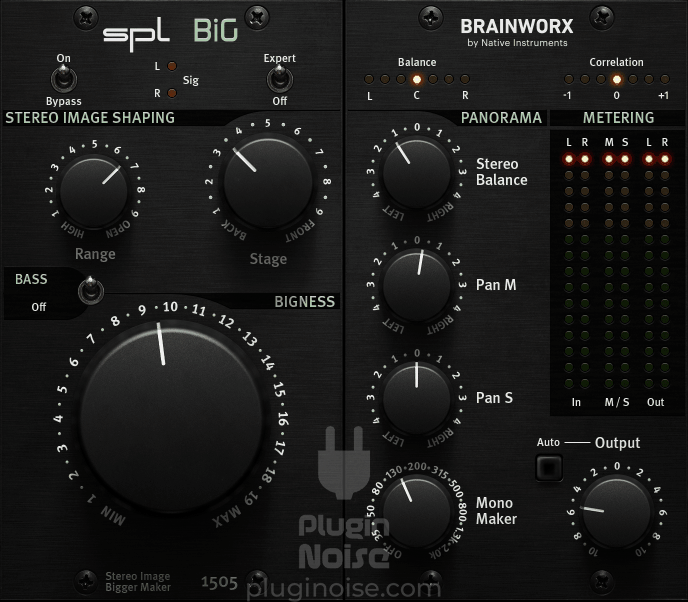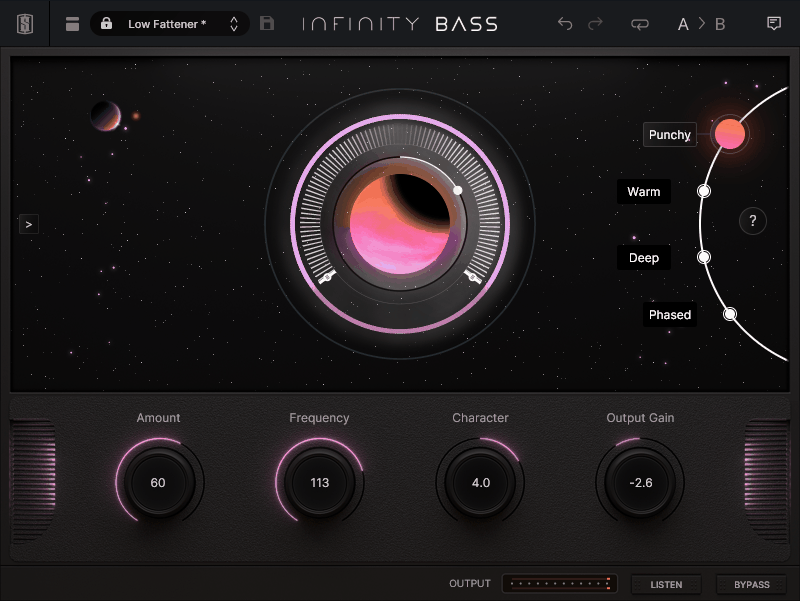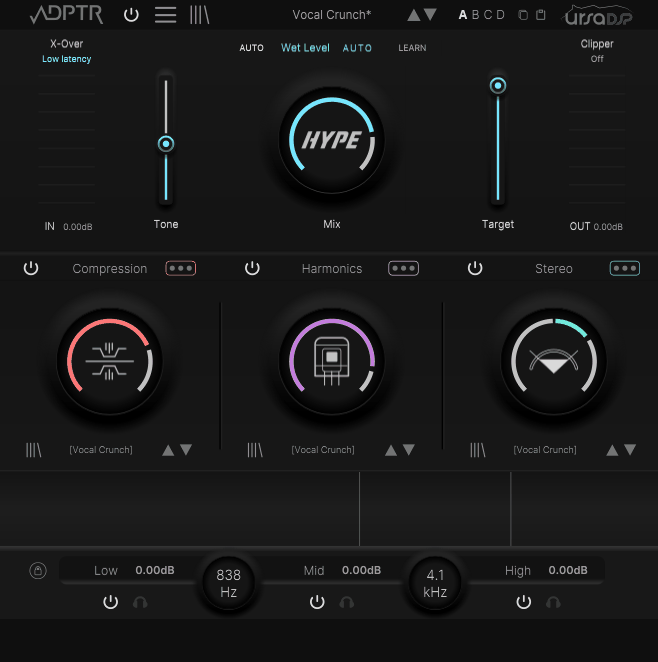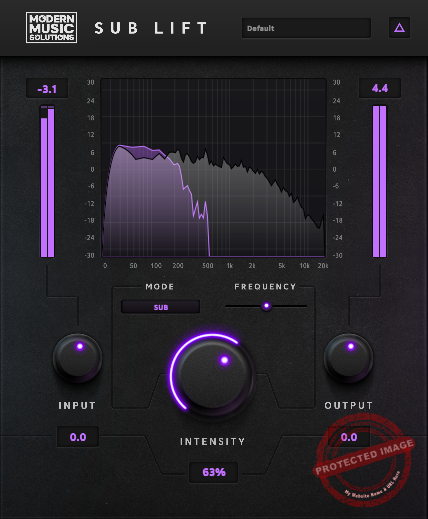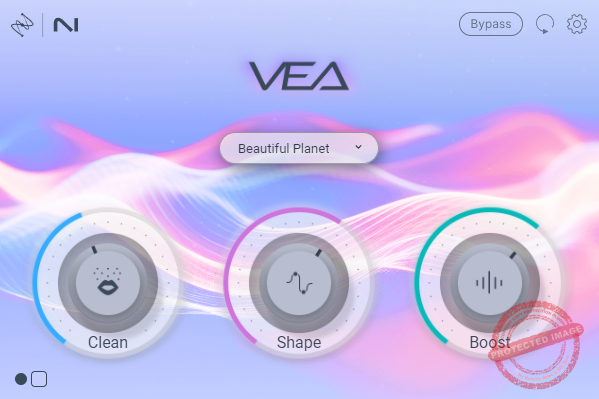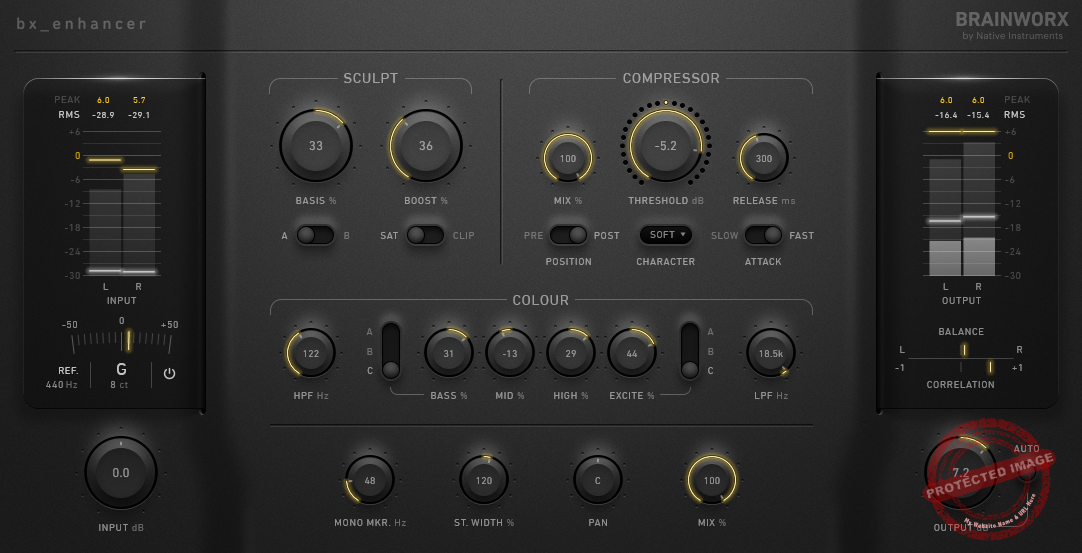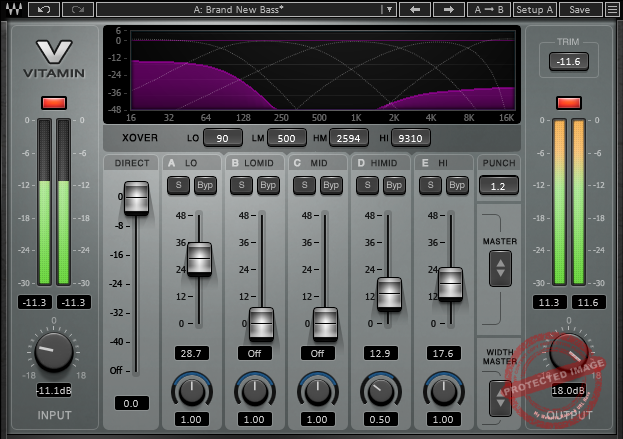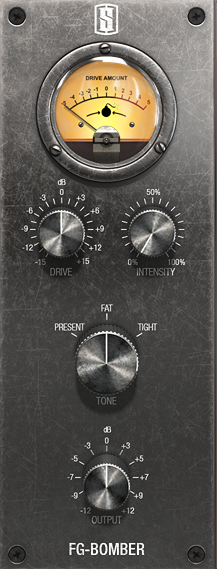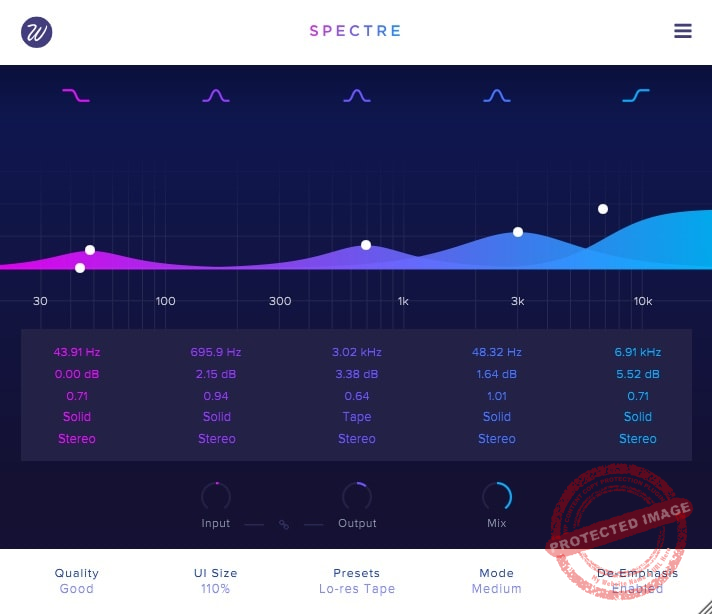To add harmonic richness, boost sonic elements to make them stand out in the mix, and add clarity, warmth, and depth to your tracks by fine-tuning frequencies, here are the Best Enhancer Plugins.
Reaching for enhancer plugins in my projects’ mix and master phases has become a regular process for me, especially to craft vocals that shine or polish muddy basslines. I use some of the listed plugins for injecting life into dull recordings or when a mix feels flat and uninspired.
Some of these enhancers emphasize certain frequency ranges, like adding “air” to vocals or “bite” to guitars, without drastically altering the overall tonal balance. I also like the introduction of subtle harmonic overtones to enrich the mix and make it sound more engaging and fuller.
There are different enhancer units, as some polish the attack and sustain with more clarity and presence, while others excel at stereo shaping for individual instruments or whole mixes.
I’ve compiled the list that I use for “enhancing” my audio and adding more flavor and personality to it, so with all that said, let’s get started!
1. SPL BiG
As producers and engineers, you would know how tricky it can be to nail a wide, spacious mix without running into issues like phase problems or losing focus.
I personally struggled with that for the longest time, especially when I was starting out. However, producers today, in 2025, have the gift of plugins like the SPL BiG.
SPL BiG audio enhancer plugin takes everything great about stereo enhancement and makes it feel effortless. It’s based on the BiG hardware unit, which is already a studio favorite.
- 3 Main Controls
You’ve got 3 main controls: Range, Stage, and Bigness. The Range lets you pick which part of the frequency spectrum you want to widen, whether it’s just the highs for that airy feel or the entire spectrum for a massive, all-encompassing sound.
The Stage moves that widened frequency range forward or backward in the stereo field, which is perfect for creating depth. And then there’s the Bigness knob, which is exactly what it sounds like: turn it up, and your mix instantly feels larger than life.
- Bas Boost
One of my favorite features is the Bass Boost. It adds this really nice weight to the low end without muddying things up. It’s especially useful on bass-heavy tracks where you want the low end to hit hard but still feel balanced.
However, all this processing usually messes up the phase of the audio, but SPL BiG handles all this without any of the usual downsides of stereo widening.
There’s no weird phasing or collapsing when you sum to mono: it’s clean, solid, and sounds amazing. I’ve been using SPL BiG on everything from guitars to synths, and it works for me to add width and depth to a track. If your mix feels too narrow or flat, this plugin can help breathe more life into your audio.
- Visual Feedback
Other than these controls, what’s impressive is the comprehensive visual communication that the interface does. You get a correlation meter that helps you monitor phase relationships, ensuring your mix stays mono-compatible without unwanted phase cancellation.
- Balance (LCR)
Balance (LCR) lets you assess the Left, Center, and Right energy, which is crucial for maintaining an even mix across the stereo field. Tools like stereo balance, Pan M (pan control for mid signals), and Pan S (for side signals) allow precise control over where elements sit spatially.
- Mono Maker
The Mono Maker is a lifesaver for cleaning up low-end mud by centering bass frequencies in mono and tightening the mix. LR, MS, and LR meters offer visual insight into the stereo spread and mid/side balance, helping you spot imbalances. A frequency analyzer ensures frequencies don’t clash or overpower, while a stereo visualizer provides a clear picture of your mix’s stereo width and depth.
The SPL BiG plugin is available in AAX DSP/Native/AudioSuite, AU, and VST2/3 plugin formats and is compatible with Windows 10/11 and macOS 15 down to macOS 12 operating systems.
2. Slate Digital Infinity Bass (For Bass)
Low end is the trickiest and most rewarding to nail in a mix, that is where Infinity Bass enhancer excels.
Sometimes, the bass lacks punch; other times, it’s missing that deep, satisfying rumble. Infinity Bass claims to solve these problems for you. This plugin doesn’t just enhance your bass; it also fixes what’s missing. It adds subharmonics to fill out the low end while keeping things tight and controlled, no matter what genre you’re working on.
- 4 Modes
You get 4 different modes, each tailored for a specific vibe. Punchy is my go-to for adding attack and presence to kicks and basslines that feel too soft. Warm works magic when I need a more musical, layered, low-end.
It’s like adding a subtle octave below without overwhelming the mix. Deep is incredible for clean sub-bass generation, especially on kick drums that need to feel bigger without sounding muddy. And Phased? That one’s a bit more experimental but perfect for adding subtle energy and texture to weaker low-end transients.
- Character and Frequency Knobs
Moreover, Infinity Bass is quite convenient to dial in. The Character knob lets you add saturation, tweak the dynamics, and control the overall tone with just one control.
And the Frequency knob lets you target specific areas of the low end to keep everything focused.
- Listen Button
I also love the Listen button; it solos the processed signal so you can hear exactly what’s being added. It’s like having a magnifying glass for your bass.
I’ve used this plugin on everything from thin kicks to basslines and was pretty happy with the results.
Slate Digital Infinity Bass is compatible with DAWs that support AU, AAX, and VST 2/3 plugin formats and works with both Windows and Mac operating systems.
3. ADPTR AUDIO Hype
HYPE is packed with tools for compression, harmonic enhancement, and stereo width adjustment, but what really stands out is how smoothly it integrates all these features into one workflow.
Whether I’m thickening up drum loops, sweetening vocals, or giving a final mix that polished, radio-ready feel, HYPE mostly delivers.
It’s divided into 3 sections: compression, harmonics, and stereo, making it super easy to focus on one task at a time or work across multiple bands.
- Multi-Band Harmonic Generation
The multi-band harmonic generation is a game-changer, letting you add anything from smooth warmth to dirty distortion across low, mid, and high frequencies. And with the new harmonic modes like Clean and Fold Over in version 1.5, there’s even more flexibility for tailoring the sound to your track.
- Compression Section
The compression section is just as impressive. You get 6 modes, from subtle dynamics control to aggressive “slam it and see” compression.
Plus, the new multi-band gate is perfect for creative effects or tightening up transients without losing the natural decay of sounds like drums and synths. And if you’re worried about things getting too wild, the Max Gain limiter ensures your settings stay musical and controlled.
- Stereo Processing
Stereo processing is another highlight. You can tweak mid/side settings for each band, adjust the width, and balance dry/wet signals, all while keeping a clean and natural phase response. The Auto Level feature ensures loudness adjustments don’t skew your mixing perspective, which is something I’ve found incredibly helpful for making clear decisions.
HYPE isn’t just a plugin. It’s like having a suite of high-end hardware processors all in one.
ADPTR AUDIO Hype is available in AAX DSP/Native/AudioSuite, AU, and VST2/3 plugin formats and is compatible with Windows 10/11 and macOS 15 down to macOS 12 operating systems.
4. MMS Sub-Lift
Modern Music Solutions has stepped outside its usual rock and metal focus to introduce Sub Lift, a low-end enhancer plugin designed for a variety of musical styles.
This decision is a smart move, as it allows producers to easily inject substantial low-end presence into both individual tracks and full mixes.
While you might think this could be achieved with a simple EQ curve, Sub Lift brings something special to the table with its added harmonics. To really appreciate what this plugin can do, it’s essential to listen on quality speakers or headphones since the low end is where it shines.
- 2 Distinct Algorithms
Sub Lift offers 2 distinct algorithms for enhancing low frequencies: Sub and Lift. The Sub mode introduces a slight bell curve, while the Lift mode maintains a flat response. Additionally, the Sub mode features subtle dips on either side of the bell curve to eliminate muddiness and enhance clarity.
- Sub and Lift Controls
Both modes significantly enrich the harmonic content of your tracks, with Sub being particularly effective on instruments that have more attack, like kick drums, while Lift serves as a versatile low-end booster.
- Input and Output Dials
With some adjustments to the input and output dials, along with the amount control, you can effectively highlight the low end in bass instruments. For example, when applied to a drum and bass track, it results in a more defined and deep low end while reducing muddiness by cutting into the mid and lower mid frequencies of synths.
One technique I found particularly effective involves cranking up the Lift setting to 100% and then following it up with a substantial low-shelf cut.
This approach warms up and blends the lower mid-range beautifully, something that standard EQs struggle to achieve on their own. Instead of merely boosting the lift, this method creates a more balanced sound without overwhelming the subfrequencies.
While using Sub Lift, you can take advantage of its rich harmonic enhancements regardless of whether you apply the low shelf before or after it.
MMS Sub-Lift is available in AAX, AU, and VST2/3 plugin formats and is compatible with Windows 7 (and newer) and Mac OS 10.13 or Newer OS (Intel & Apple Silicon M1 Native) operating systems.
5. iZotope VEA
The VEA is a voice audio enhancer plugin that’s definitely a game-changer for anyone who records their voice, whether you’re a podcaster, content creator, or even a rapper.
I’ve been using VEA, the AI audio enhancer, and it’s like having a personal audio engineer right there with you. It’s super straightforward, and you do not need to worry about your skill level.
What I love about VEA is that it pulls from iZotope’s top-notch tech found in their RX, Ozone, and Nectar plugins. This means you’re getting some serious audio enhancement under the hood.
It boosts clarity, balances levels, and cuts down on background noise, all the things that can make or break a recording. For instance, when I recorded my last podcast episode, I was blown away by how much cleaner my voice sounded after running it through VEA.
- Shape Control
The Shape control is particularly nifty. Instead of spending ages tweaking EQ settings or sifting through presets, you just dial it in to fit your voice. Whether you’re narrating a video or chatting in an interview, VEA makes sure your voice is front and center in no time. It’s like magic; you hit a button and suddenly sound way more professional.
- Boost Feature
Then there’s the Boost feature, which adds some serious presence to your voice without needing to understand all the nitty-gritty of compression or limiting. This is a lifesaver for content creators like me who want our vlogs and tutorials to have that smooth, engaging sound. You can focus on what you’re saying instead of worrying about how you sound.
- Clean Control
One of the standout features is the Clean control. If you’re like me and sometimes record in less-than-ideal conditions, maybe near an air conditioner or during a noisy video call, you’ll appreciate how well VEA handles noise reduction. It effectively trims out unwanted sounds while keeping your voice sounding crisp and clear.
- Audiolens
Another cool aspect is Audiolens, which lets you match your audio to that of your favorite creators or podcasts. Just upload a sample from any source, and Audiolens helps visualize and replicate that sound. It’s super handy if you want to achieve that signature style of someone you admire.
Izotope VEA is compatible with macOS Monterey (12.7.1), macOS Ventura (13.6.2), macOS Sonoma (14.1.2) and Windows 10/11 operating systems, and is available in AAX, VST3, and AU plugin formats.
6. Brainworx bx_enhancer
I often go to bx_enhancer to add more life and depth to my mixes as it is a super feature-packed plugin for precise controls.
As an all-in-one enhancer, bx_enhancer VST blends great features like saturation, compression, stereo imaging, and tonal shaping in a streamlined interface. It comes with a built-in tuner, which is great for for live recordings or when working with analog instruments.
The unit thrives in saturaiton and clipping sections as you can inject the right amount of distortion by dialing in these controls to tranform a flat-sounding track to vibrant and warm tones.
- Boost Knob and Clip Mode
The Boost knob thickens the signal beautifully, while the Clip mode adds grit for more aggressive tones.
To balance the frequency spectrum after applying saturation, the Basis control acts as a tilt EQ, letting you emphasize either the high or low end without overcomplicating the process. I find myself using the A mode for a natural tonal balance and the B mode for adding a focused midrange punch, depending on the material.
- Sculpt Section
You get a Sculpt section, where you can add harmonic saturation and density to your sound, giving tracks more presence and energy. The Basic and Boost knobs are central to this, with the Basic control applying subtle harmonic enhancement and the Boost knob delivering a more pronounced effect.
- A and B modes
Switching between the A and B modes lets you tailor how the saturation shapes your sound. A mode works as a tilt filter, balancing between the highs and lows, while B mode emphasizes midrange for a focused punch. You also have the option to toggle between Sat (saturation) and Clip modes.
- Compressor Section
The Compressor section comes with all the controls you need for dynamic shaping like the Threshold and Relase knobs.
For smoother signals like vocals or basslines, I typically use a slower release to create a natural swell, while faster releases are perfect for tightening transients on drums or percussive elements.
- Attack and Character Controls
The Attack control is set to slow to preserve transients and articulation in sounds like acoustic guitars or go for a fast attack to clamp down on peaks and smooth out overly aggressive signals. The Character setting adjusts the compressor’s knee, with soft for gradual compression, medium for general-purpose control, and hard for an almost limiting effect.
- Pre – Post Placement
Placing the compressor Pre or Post in the signal chain is another thoughtful feature, letting you decide whether dynamics are shaped before or after tonal adjustments.
- EQ Section
The Bass, Mid, and High knobs let you boost or cut specific frequency ranges to shape your mix further. The Excite control is particularly interesting, as it applies a subtle high-frequency boost while scooping out mids, adding a sense of air and sparkle without harshness.
- Auto-Level Feature
What makes bx_enhancer especially practical is its Auto Level feature, which prevents the common issue of loudness bias. By automatically matching the output level to the input, you can focus on the tonal and dynamic changes without being misled by perceived volume increases.
The Brainworx bx_enhancer is available in AAX DSP/Native/AudioSuite, AU, and VST2/3 plugin formats and is compatible with Windows 10/11 and macOS 15 down to macOS 12 operating systems.
7. Waves Vitamin (All Round)
Vitamin is a great enhancer plugin that adds energy and clarity to tracks quickly and efficiently thanks to its easy worfklow.
With a simple slider workflow, Vitamin Sonic Enhancer allows you to add more life to something that feels dull or lacks presence.
- 5 Frequency Bands
The plugin splits the audio into 5 frequency bands, and each band can be independently tweaked for dynamics, width, and harmonic richness. This multiband approach gives you the flexibility to focus on specific areas of your mix, whether that’s tightening the low end, enhancing the mids, or adding sparkle to the highs.
I love narrowing the bass frequencies to keep them centered and punchy while spreading out the high-end to create a wide, immersive stereo field.
- Punch Control
Next, the Punch control is perfect for adding snap to drums or giving instruments a little extra bite. I’ve used it to bring out attack on kick drums and tighten up vocals, but it’s just as effective for softening transients when you want a smoother vibe.
- Solo and Bypass buttons
What’s great about Vitamin is how intuitive it is. The Solo and Bypass buttons for each band make it super easy to isolate problem areas and fine-tune crossover points. I also appreciate the Blend knob, which lets you balance the processed signal with the original to keep things sounding natural.
Waves Vitamin is compatible with macOS Monterey 12, Ventura 13, Sonoma 14, Sequoia 15, and Windows 10/11 operating systems and is available in VST, AU, and AAX plugin formats.
8. Slate Digital FG-Bomber (part of Virtual Mix Pack)
The FG Bomber is a dynamic audio enhancer vst plugin by Slate Digital that’s based on a simple workflow. What sets it apart is the way it enhances both the transient punch and sustain, depending on how you dial in its settings.
- Drive Control
The star of the show here is the Drive control. When you push the drive to the left you make it focused on transient enhancement, making kicks and snares snap out of the speakers with energy. Pushing it to the other end is for sustain emphasis, reverb tail extension, and giving more body to instruments
The sweet spot is often somewhere in between, and finding it is a matter of listening carefully to the balance between punch and fullness.
To really hear what the Bomber is doing, I like to crank the Intensity to its maximum while cycling the drive. That makes the effect obvious so I can dial in the right balance. Once that’s set, I back off the intensity to blend it subtly into the mix.
- 3 tones: Present, Fat, and Tight
Then, there’s the tone knob that lets you choose between 3 tones: Present, Fat, and Tight. On drums, the FG Bomber works wonders for making kicks feel tight and snappy while giving snares a huge, satisfying sustain. On vocals, it adds polished depth and clarity, while on the mix bus, it’s more about gluing the elements together while adding a touch of excitement and dimension. Even in low-intensity settings, the Bomber has a way of breathing life into a mix, making it sound tighter and more cohesive.
Slate Digital FG-Bomber is compatible with AU, VST2, VST3, or AAX 64-bit hosts and works with macOS 10.15 or later and Windows 10/11 operating systems.
9. Wavesfactory Spectre
As a combination of the precision of a parametric EQ with the rich tonal characteristics of harmonic saturation, the Spectre is a versatile hybrid enhancer plugin.
This plugin is more than a traiditon EQ as it does more than boosting frequencies. It adds harmonic content to specific parts of teh spectrum, with high-qualtiy saturaiton algorithms it has. This way you can infuse more warmth, depth, and color into any track or mix.
- Treats All 5 bands Independently
What makes Spectre unique is its ability to treat each of its 5 bands independently. You can apply different saturation algorithms to each band and even process them in stereo, mono, or mid/side modes.
That opens up a world of creative possibilities, from making a bassline punchier and more speaker-friendly to adding sparkle to vocals or even creating stereo width enhancements. The mid/side matrix is particularly useful for mastering or broadening the spatial feel of a mix without compromising mono compatibility.
- 10 Saturation Types
The plugin features 10 saturation types, including Tube, Tape, Diode, Solid-State, and even Digital modes, all inspired by classic analog hardware.
You can dial each saturation mode for subtle, medium, or aggressive processing, letting you control how much character is added. For more natural sound enhancement, the Clean mode functions like a parallel EQ, offering smooth, unprocessed-sounding boosts.
- 4x – 16x Oversampling
You can use Spectre audio enhancer at oversampling rates of 4x or 16x, which ensures pristine audio quality by eliminating aliasing, even at extreme settings.
The De-Emphasis control is another standout feature. Compensating for EQ boosts post-saturation to maintain consistent overall levels while adding harmonics. This makes it perfect for subtle enhancements or bold tonal shifts without unbalancing the mix.
Spectre’s intuitive EQ-style interface makes it approachable, but its depth ensures it remains a powerful tool for both mixing and mastering.
Spectre comes in VST, VST3, AAX, and AU formats for macOS and Windows users.

Shaurya Bhatia is a versatile content writer with a strong focus on music production, composition, and the technical aspects of audio engineering. With a deep understanding of the music industry, Shaurya specializes in creating insightful and engaging content around music production techniques, songwriting, audio engineering, and the intersection of technology and art in music. He loves to create content for musicians, audio engineers and sound designers.

